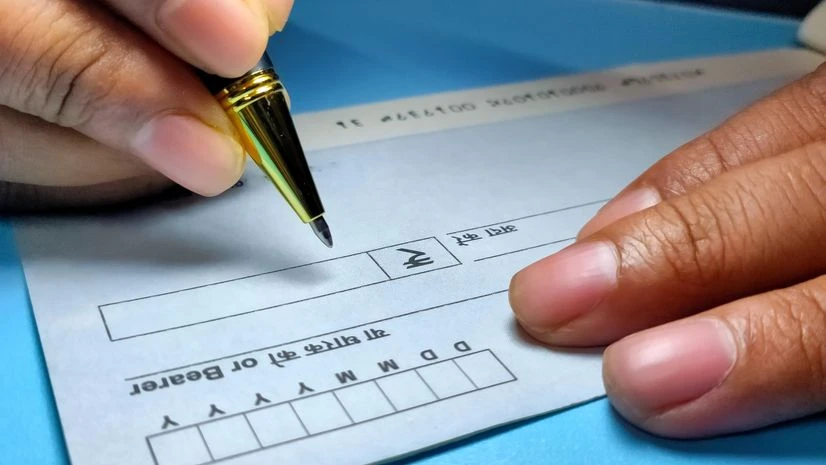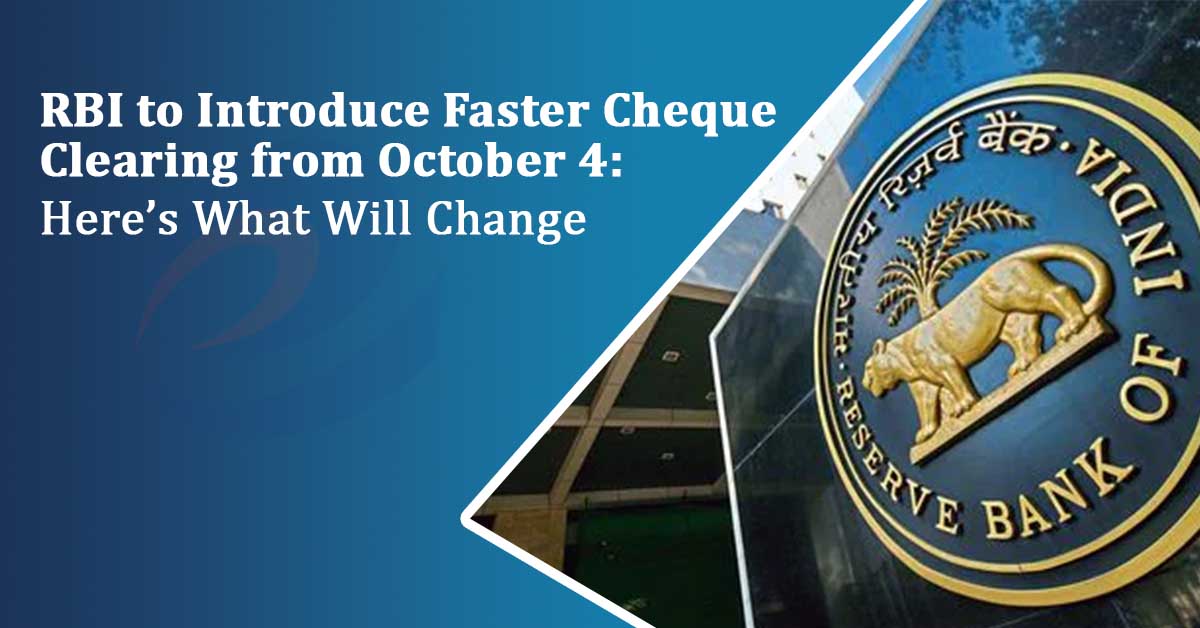Faster Cheque Clearance From October 4: Starting October 4, 2025, banks across India will implement same-day cheque clearance, marking a major step forward in payment efficiency and security. The Reserve Bank of India (RBI) has updated its cheque settlement framework to ensure faster processing, reduce delays, and enhance the reliability of cheque transactions. Currently, cheque clearance through the Cheque Truncation System (CTS) works in batch mode, which can take a day or more for settlements.
Under the new system, cheques deposited from October 4 onwards will be cleared within a few hours on the same working day. This change is expected to improve cash flow management for businesses, minimize risks of delayed payments, and complement the growing adoption of digital payment methods like UPI, NEFT, and RTGS.
How the Faster Cheque Clearance System Works
Scanning and Transmission
When a cheque is deposited:
- Banks will scan cheque images and capture Magnetic Ink Character Recognition (MICR) data.
- The images are sent to the clearing house, which forwards them to the drawee bank throughout the day for verification.
Confirmation Window
- Drawee banks must respond promptly to cheque images.
- Initially, the confirmation window runs from 10 am to 7 pm.
- Each cheque comes with an “expiry time”; banks must process in real-time and report back to the clearing house immediately.
Read about: Transforming Public Finance: How AI is Driving Transparency and Efficiency in India
RBI’s Two-Phase Rollout
Phase 1 (October 4, 2025 – January 2, 2026)
- Banks have until 7 pm on the same day to confirm cheque clearance.
- If the drawee bank does not respond, the cheque is automatically approved and settled at the deadline.
Phase 2 (From January 3, 2026)
- The confirmation window is reduced to three hours.
- For example, a cheque arriving at 10 am must be confirmed by 2 pm.
- Cheques not confirmed within three hours are deemed approved and settled automatically.
After settlement, the clearing house informs the presenting bank, which credits the customer’s account within an hour.
Positive Pay System: Enhancing Cheque Security
The Positive Pay System is a security feature recommended for:
- Cheques over Rs 50,000 (optional)
- Cheques over Rs 5 lakh (mandatory)
How it works:
- Customers share cheque details (account number, cheque number, date, amount, and beneficiary name) with their bank in advance.
- The bank cross-checks the details when the cheque is presented.
- Clearance occurs only if the information matches, reducing fraud risks.
The RBI provides dispute resolution protection exclusively for cheques verified under this system.

What Customers Need to Do
To ensure smooth clearance:
- Maintain sufficient account balance before issuing cheques.
- File cheque details accurately to prevent rejections or delays.
- Use Positive Pay for high-value cheques to enhance security.
Benefits for Customers and Businesses
According to Adhil Shetty, CEO of Bankbazaar.com:
- Faster processing improves customer experience and reduces risk from delayed settlements.
- Continuous clearing allows cheques to be scanned, presented, and cleared throughout business hours, making the process more efficient.
- Businesses can manage cash flow better, and banks can reduce errors and delays.
- Complementary to digital payments, this system enhances the overall reliability of the banking system.
Also read: Millets Up, Sugar Down: ICMR’s Diet Recommendations to Fight Non-Communicable Diseases
FAQs
1. When will same-day cheque clearance start?
Same-day cheque clearance will start from October 4, 2025. All cheques deposited from this date will be processed and cleared on the same working day.
2. What is the Positive Pay System?
Positive Pay is a security system that requires customers to provide cheque details (number, date, amount, beneficiary) in advance. Banks cross-check this information at the time of clearance, preventing fraud and errors.
3. How will the RBI implement this faster cheque clearance system?
The RBI is implementing the system in two phases:
- Phase 1 (Oct 4 – Jan 2): 7 pm confirmation deadline
- Phase 2 (from Jan 3): 3-hour confirmation window for each cheque
4. What happens if a bank does not confirm a cheque on time?
If a drawee bank does not confirm the cheque within the stipulated time, it is deemed approved and automatically settled, ensuring that customers receive funds promptly.
5. How does this benefit businesses and customers?
The faster clearance system:
- Improves cash flow management
- Reduces delays and errors in cheque processing
- Enhances payment security
- Works alongside digital payment methods to improve banking efficiency

2 thoughts on “Faster Cheque Clearance From October 4: Everything You Need to Know”